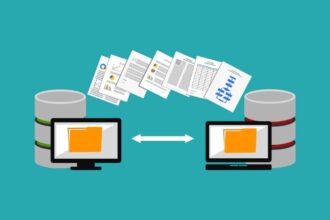In the motion picture industry, studios separate responsibilities for creating content from responsibilities for distributing content. The people who make the movies option the scripts, hire the talent, and film the scenes. The distributors of the films, on the other hand, figure out how to package and deploy the films. They need to know which theaters require 30 millimeter versus 70 millimeter formats, or even IMAX. They also deal with DVD packaging, including different international DVD formats. The industry understands the importance of having a supply chain that differentiates between the roles of content creation, content packaging, and distribution. In…
In the motion picture industry, studios separate responsibilities for creating content from responsibilities for distributing content. The people who make the movies option the scripts, hire the talent, and film the scenes. The distributors of the films, on the other hand, figure out how to package and deploy the films. They need to know which theaters require 30 millimeter versus 70 millimeter formats, or even IMAX. They also deal with DVD packaging, including different international DVD formats. The industry understands the importance of having a supply chain that differentiates between the roles of content creation, content packaging, and distribution.
In IT we’re very quick to point to our operational systems as creators and owners of data. But maybe the solution is that IT establishes a functional team that’s responsible for data packaging and distribution, just like the movie industry.
Traditionally data formats and standards have fallen into the realm of the architecture team. Unfortunately this is typically a paper-only activity without teeth. A data distribution team wouldn’t focus on paperwork. They would be focused on data logistics, receiving content from the various source systems and packaging the data for consumption by other systems. This isn’t about implementing a specific platform to store or move data. It’s about active management of corporate data content.
One of the biggest development challenges is the hunting expedition that developers go on to find and acquire the data they need. Most aren’t aware of all their choices, let alone the optimal systems of record.
Currently every application, data mart, data warehouse, reporting system that needs data from another system follows a specific set of procedures to obtain that data. Each system requests different data formats, different delivery schedules, and different content. Everything is custom, there are few if any standards, and there are no economies of scale.
This will also unburden the various application teams from building and maintaining the never ending volume of custom extract requests. The only way to stop the madness is to compartmentalize content creation from data packaging and distribution. This means establishing a data supply chain that separates data creators from data distribution from consumers. Who knew IT infrastructure was just like the movies?







